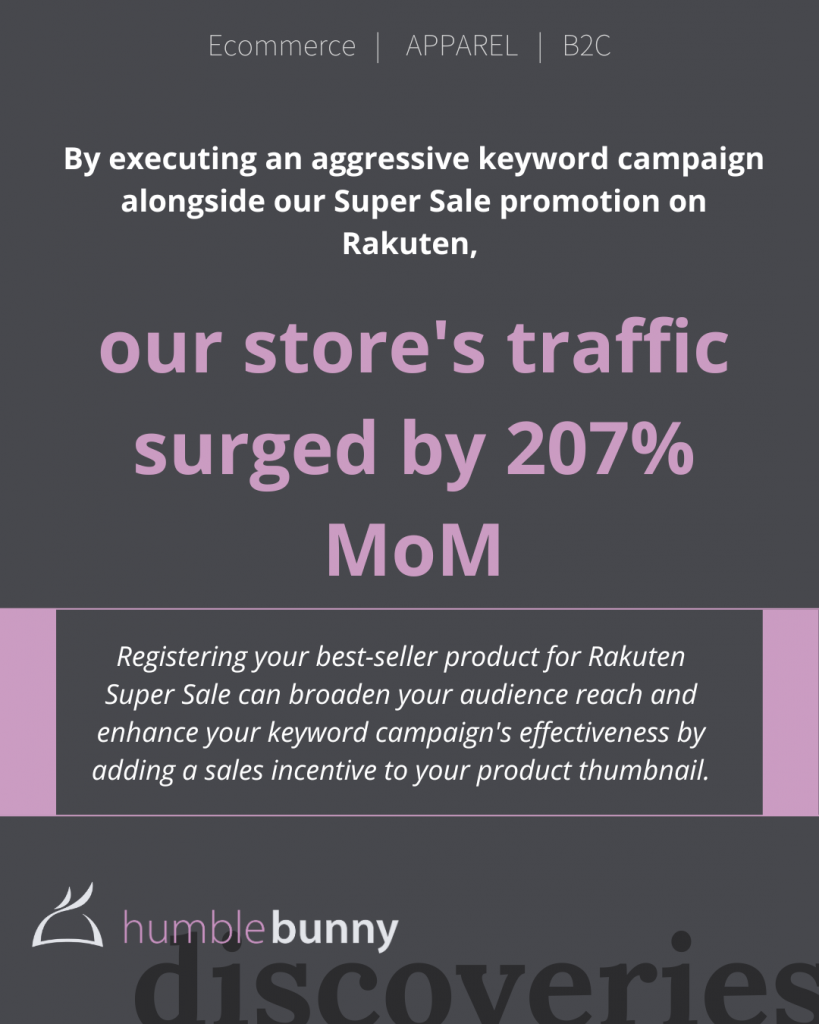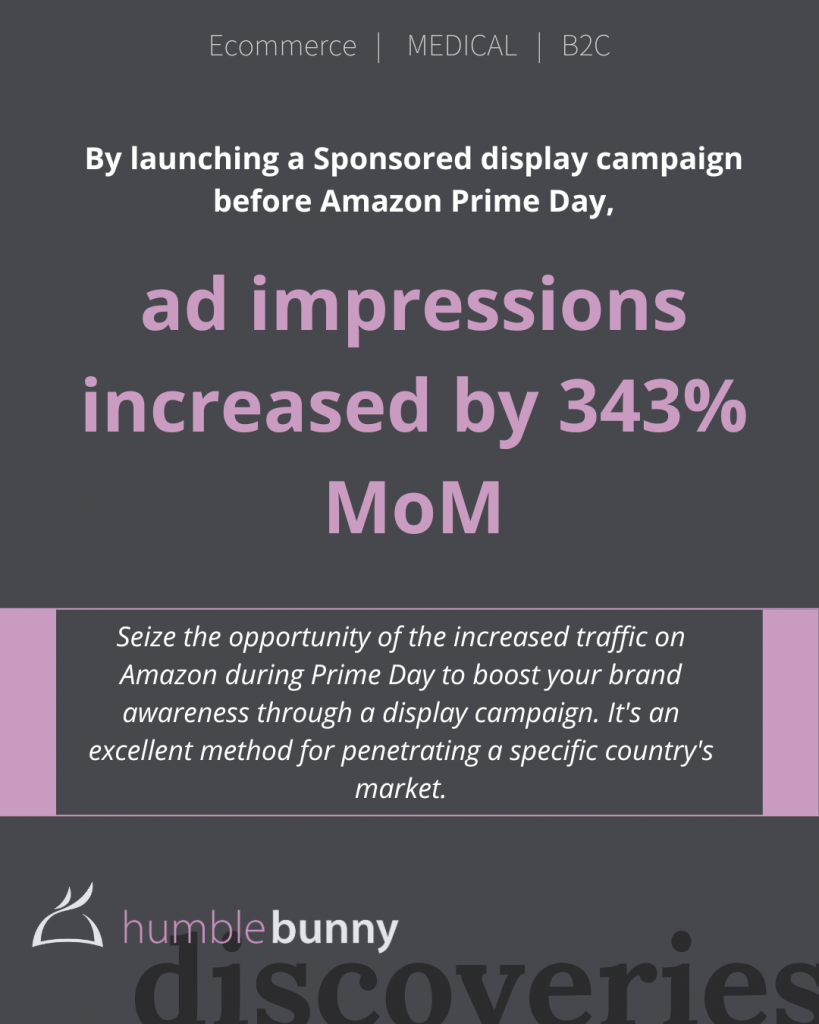Japan has the third-largest ecommerce market in the world, excellent logistics infrastructure, and a domestic population with significant purchasing power. But this doesn’t necessarily make selling online in Japan easy.
Some of the real challenges merchants face when operating here are only overcome with diligent research and planning, realistic expectations, and a willingness to adapt your process to the unique requirements of the Japanese market.
In this post, we bring you five of the most important rules you must follow when trying to bring your products to market through one of the country’s popular ecommerce platforms.
Table of Contents
A Glance at the Landscape
We’ve gone into great detail about the Japanese commerce landscape, including its growth trajectory in years to come and the main opportunities open to foreign merchants. Before you go any further, we recommend taking a look at our complete overview: Getting into Ecommerce in Japan? Here’s Everything You Need to Know.
But if you’d rather push ahead, here are some of the basics:
- Amazon is typically where most international sellers begin their journey into Japan. This is because the interface and functionality are familiar and the platform has the biggest market share among ecommerce platforms.
- Rakuten, Japan’s homegrown ecommerce giant, is the second biggest platform in Japan. It has over 49,000 virtual shops on its platform and caters to a quarter of Japan’s total ecommerce market share. It’s a little harder to use if you don’t speak Japanese or have limited resources in-country, but it’s an incredible vehicle for reaching a diverse network of Japanese consumers.
- Yahoo! is still thriving in Japan, with its online shopping division, Yahoo! Shopping and Yahoo! Auction. It caters to millions of shoppers each month and benefits from an online ecosystem of multiple channels, including Yahoo! News, the most popular news platform in Japan.
- Smaller, domestic ecommerce platforms offer increasing opportunities to reach a wide section of Japan’s population. If you want to target niche groups, platforms like Mercari, ZozoTown or DMM could offer you better returns.
HB Pro Tip: Japanese platforms present a number of challenges to foreign businesses who don’t have extensive local language support and capabilities, due to their more demanding registration, language, and localization requirements. This can make the onboarding process more complicated taking time away from actually selling your products. Success can often rely on finding local partners or vendors who are already authorized to sell on one of these platforms and can get your products to market as soon as possible.
Localize Your Approach for Selling Online in Japan

When in Japan, “localizing” is more of a mindset than a specific activity. A localized ecommerce strategy is crucial to a product’s success here and without it, you increase the obstacles you face as a foreign merchant trying to reach Japanese customers.
Finding a way to overcome language and cultural barriers is one of the first things you need to think about. Even with a winning product, a strategy that doesn’t produce Japanese products description, titles, images, and marketing content tailored to the Japanese user won’t get you very far.
We’ve seen something as seemingly straightforward as targeting the right top-ranking intent-driven Japanese keywords in product titles lead to a 14.24% MoM increase in product page sessions on Rakuten for one of our clients.
Also, always keep in mind that your Japanese competitors will always have an advantage over you simply because their products are made here. When you’re trying your best to win over as many customers as possible, you don’t want to face even greater resistance with a non-localized ecommerce strategy.
A few more reasons to localize include:
- Greater engagement with your target audience
- Showcase content that is more likely to convert users
- Greater presence and reputation within your market
- Gain trust easier from Japanese consumers
- Improve your organic search volume with Japanese SEO optimized product listings for ecommerce platforms
- Avoid basic translation mistakes and misrepresentation of your brand
Product Listings
To make your products as engaging and appealing as they are in your home market, it’s better to develop your listings from scratch, or make sure they’re scrutinously localized and optimized for the kind of Japanese users you want to sell to. Simply translating your product names and description from English isn’t enough.
Phrases that seem out of place, descriptions that are too vague or confusing, or just a lack of information where Japanese people would prefer more in-depth explanations will stunt your conversion rates, even if you manage to elicit some initial interest.
When compared to other nations, Japanese individuals appear to have a much higher desire and capacity for technical data and information. Use this knowledge to pay more attention to the following in your descriptions:
- What products are made from (specific types of materials and their properties)
- Where materials are sourced from and where the product was manufactured
- The expected lifespan and overall durability of your product
- The type or generation of technology it relies on (if any)
- The specific way your product works and how people can use it
- Any weaknesses or disadvantages (e.g. if your raincoat isn’t 100% waterproof, don’t say that it is)
- High-quality visuals that show your product being used by Japanese models in Japanese settings
- Images from different angles
HB Pro Tip: Avoid saying your product is “the best” in an abstract or non provable way. If you’ve received awards or have been ranked by an independent body for being best in class, then, by all means, showcase this, but be careful about claiming that you are the “number 1” product in your market if you’re not. As a foreign seller, honesty, transparency, and being upfront are necessary virtues when trying to win trust.
Learn More About Japanese Website Localization
Understand Your Place in the Market

Japanese people buy products from all over the world, but they’re especially into ones made in their home country. Households show strong signs of loyalty to brands they know and trust. This makes it harder for outsiders to break into the market, especially in segments are already saturated by competitor products.
One of the major reasons for this is a natural aversion to uncertainty among consumers. In fact, Japan has one of the most uncertainty avoiding cultures in the world. On Hofstede’s Uncertainty Avoidance Index, the nation holds one of the highest scores of all societies, registering 92/100. This can translate into an unwillingness to buy products from less known brands or companies that are not known to be completely reliable.
To thrive here, it’s useful to understand a few situations where shoppers do choose foreign brands over Japanese ones:
- Higher brand reputation from a foreign brand
- Association with popular figures or influencers
- Better quality and reliability
- More value for money
The biggest mistake is to think that just because you’re bringing a Western product to the market that you’re likely to have a good chance of making some strong sales. Unless you position yourself effectively to showcase all the advantages your brand can offer, while doing your best to overcome trust issues, you won’t be given as much attention as you’d like.
Know Who You are Selling to

A part of good positioning when selling online in Japan is being clear about who your products are for. The Japanese consumer landscape is more diverse than some would have you believe, and you’ll need to appeal to the preferences and motivations of individual segments, rather than to everyone.
For instance, you may be used to marketing to a younger age group, but you could find out that your brand actually takes on a more luxury and prestigious persona when in Japan (if you’re lucky).
Rather than trying to convince people otherwise, focus on embracing the opportunity by adjusting your strategy towards older shoppers, who have a strong appetite for luxury fashion products with much greater purchasing power as a demographic group.
Want to Know More About Japanese Consumers? We’ve Got Some Useful Insights for You
Do You Need to Adjust Your Pricing?
Being cheap isn’t’ always a good thing, and in Japan where quality and prestige are often valued more than just price alone, it’s worth considering your pricing strategy very carefully. Avoid giving customers the impression your products are inferior to similar products on the market due to a lower price by carefully monitoring what your competitors are doing.
When taken seriously and handled intelligently with the help of accurate market research, pricing can be an incredibly effective marketing tool that supports your brand reputation in Japan.
According to Export to Japan, a semi-UK government funded non-profit organization supporting businesses develop their business in Japan, a few tips for localizing your pricing strategy include:
- When establishing pricing in Japan, it’s common practice to inflate the price by 20% to 30%
- It’s recommended that you create a localized website in Japanese and redirect your customers to it by using their IP addresses. This would prevent your shoppers from visiting other regions and price shopping.
- It is advised that Japanese prices should be rounded to the nearest hundredth, as in 3,500 or 24,700.
- The Japanese culture has its share of unlucky numbers and it’s better to avoid adding them at the end of displayed prices.
HB Pro Tip: Dynamic pricing is a very profitable ecommerce pricing strategy where you set flexible prices by taking into account costs, targeted profit margins, the demand of the market, and your competitors’ prices. In other words, it allows you to set the optimal prices at the right time in response to real-time demand and competition status while taking into account your business goals.
Build A Great Customer Service Strategy

Customer service expectations are incredibly high in Japan. There is a presumption that brands and sellers will help their customers in any way possible. This can mean delivering a good service and products in the first place, but also following up with comprehensive after-sales activities to make sure people are satisfied.
For anyone operating here, foreign or otherwise, it’s common practice for merchants to have a robust team of Japanese native speakers in place to handle a number of issues like customer inquiries, delivery times, and sales policies. Remember, consumers here want to know exactly what they’re getting before they commit.
Amazon is probably the most useful in terms of helping you deliver to some of these requirements when selling online in Japan, by following up with customers who have received their products and handling any requests for returns on your behalf.
However, there are many things you will have to arrange yourself with the help of local staff or by working with a partner who can take on this side of the business. Other platforms like Rakuten will even place greater pressure on your Japanese customer service capabilities.
What Do Japanese Online Shoppers Expect?
- Courtesy – Customers expect to be treated with courtesy in all their encounters with brands and service providers. This is deeply rooted in Japanese culture, where the hierarchy dynamic between customer and vendor is well defined, with an expectation that the merchant will do everything they can to serve their customers.
- A good track record – Poor reviews will kill your business quickly in Japan. Having a good track record through testimonials and user reviews is an integral part of building your reputation here and overcoming trust issues. Assuming you’re confident that you’ve delivered a good service, encourage happy customers to leave a review online.
- Keep your commitments – If you say you’re going to do something, you need to do it. This applies to delivery dates and returns policies. It’s also crucial you don’t overstate the effectiveness of your product in descriptions. Even if this is common practice in Western markets, saying your product can do something it can’t isn’t recommended here.
Do I Need to Speak Japanese?
While you yourself can certainly get away with not speaking Japanese, it’s important that those in charge of certain activities in your business have a good grasp of the language. External partners who are able to bridge the gap between foreign brands and the Japanese market can also be useful. Many established companies offer services tailored to international ecommerce sellers including:
- Customer support
- In-platform page maintenance (on platforms like Rakuten)
- Order and return management
- Product listing optimization and platform SEO
- After-care sales
HB Pro Tip: Many merchants look for support from local partners who can handle daily ecommerce activities while focusing on business growth and development. This can reduce the chance of fluency being a barrier, but it also comes with additional costs that could reduce your overall profits. It’s a call you have to make yourself baked on your time and resource availability.
Optimize the Customer Experience for Japanese Users

Japanese consumers are cautious about purchasing products they have little information about. The way your products listings are created and displayed is very important, but visuals and the overall UX are also important factors to consider.
Shoppers are motivated and triggered by different visuals and messages than your customer base back home might be.
Selling Online in Japan through Your Own Online Store?
If you’re building a Japanese website and selling through it, or creating a virtual storefront through a platform like Rakuten, you’ll need to consider carefully how it’s designed within the context of Japanese web design and UX preferences.
Good UX elements for a Japanese ecommerce platform includes:
- More images of your products
- Greater amounts of text and detailed information upfront
- Less white space on page
- Content aims to inform the purchasing decision rather than create an emotional connection
- Multiple scripts are used as well, as both vertical and horizontal text lines
- Smaller and more frequent graphics are used rather than larger high-resolution images
- Data, testimonials, and statistics are given more priority on landing pages to build trust with the user
- Several contrasting colors and design elements are often used within small spaces
HB Pro Tip: If you also have a physical stereo in Japan, make sure to feature it on your website to show customers that you’re an established company here, rather than just a company that ships products from abroad. This can make a huge difference in building trust.
Mobile Users
Mobile is the most preferred platform for online shopping Japan today with the mobile internet penetration rate amounting to approximately 91 per cent in 2019 and projected to increase to about 95 per cent by 2025.
Large retailers like Amazon, Rakuten, and Yahoo! Japan have developed applications to facilitate mobile ecommerce, as well as large global brands like Nike and Adidas.
Even if you’re not big enough to build your own app, adapting your website content so it looks good and functions well on mobile will obviously help to drive sales when selling online in Japan. Small things like adjusting your descriptions within platforms like Amazon and Rakuten shouldn’t be overlooked.
People perform actions within very defined and temporary micro-moments today, and making sure the process of finding and purchasing your product is as frictionless as possible on mobile will help you convert browsing shoppers in greater volumes.
Condensed information; logical layouts; bullet lists, and clear and concise descriptions will all make it easier for mobile shoppers to consider your products.
Mobile Payment Methods
| Mobile Payment Method | Market Total ($US) |
| Ecommerce completed on a mobile device | 36.6 billion |
| Mobile ecommerce completed in-app | 16.5 billion |
| Mobile ecommerce completed on a browser | 20.1 billion |
Source: J.P. Morgan 2019 Payments Trends: Japan
Don’t Forget About Post-purchase
Place importance on your aftercare and post-purchase strategy to check your customers aren’t slipping away silently.
An effective rewards system and deals strategy can be incredibly effective when trying to strengthen and grow your customer base. Japanese shoppers have a strong and ongoing love affair with points systems and many have cited specific schemes as a major motivator for returning to a platform or brand.
There are a number of ways to accomplish this in Japan. The easiest would be to align with one of the many points offering systems that are already available. For example, T-Points and Ponta points systems are two very popular ones that can be used in convenience stores, restaurants, and even car dealerships. But if you’re selling on Amazon or Rakuten, they both have their own points systems built into their websites.
Another option is to reward your customers with your own, homemade, point system. It’s a fun and powerful method to keep customers coming back to your shop and buying more in the future.
Japanese shoppers have a strong and ongoing love affair with points systems and many have cited specific schemes as a major motivator for returning to a platform or brand
Fast and Reliable Shipping

International merchants can opt for direct cross-border shipping or in-country warehousing models when selling online in Japan, such as the Rakuten Super Logistics solution, offering full-service freight management, multichannel order fulfillment, and return management for online orders.
Whatever shipping option you choose, just make sure your deliveries are fast and reliable. Japanese shoppers are incredibly spoiled by next day deliveries. If you’re handling fulfilment yourself, make sure you have a good team to handle both the logistics and customer service aspects of product deliveries.
A common setup is to use your own long-term storage facility to house your stock, while fulfilling “last mile” (to the customer) via a marketplace solution. This will allow you to leverage something like Amazon’s logistical support to deliver reliable deliveries while taking more control over your logistics.
HB Pro Tip: We always recommend using in-country warehousing to uphold the need for quick and reliable deliveries. Removing the chance for delays and hiccups will help to improve your reputation and drive more conversions.
Final Tips and Best Practices

Many Japanese customers might panic at the sight of English when shopping, even if they’re relatively keen on your products. Imagine your own reaction when browsing for products and come across a Japanese product description. It’s likely that you’ll keep looking until you find something that leaves no room for doubt.
While younger users are more open to Western products and brands, they generally have much lower purchasing power than individuals in other developed countries, partly due to Japan’s adherence to hierarchies within company structures. This means that adapting your brand to focus more on an older demographic group could be necessary to secure the sales you need here.
Avoid leaving any gaps in your product descriptions about what you offer and how your products work. Focus less on generic marketing promotions and explain specific details that will help to build consumer confidence.
Steal Our Best Ideas
Actionable insights straight from our data
Here are a couple quick discoveries we’ve pulled from the data of our latest projects. Why? To help you make the changes you need to gain traction in the Japanese market! As an agency, we are always digging deeper and searching for those little yet significant tweaks that will push our clients to the next level of success. If you need a partner to help you identify and implement changes like these on a monthly basis, let us know!




Need help gaining traction for your business in Japan? Let’s chat on how we can help.